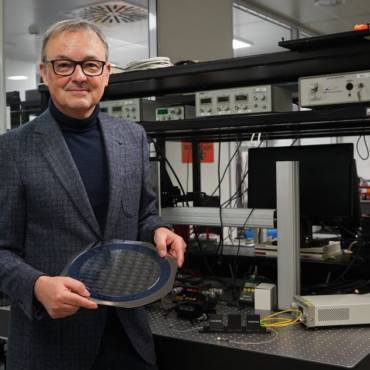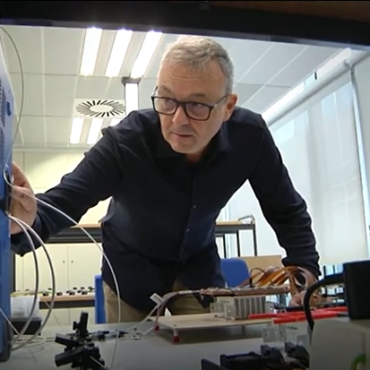- The European project BlueSpace pursues to achieve a 1000-fold increase of network access capacity.
- 5G specifications envision a user throughput of up to 20 Gbps and the concentration of up to 1 million devices per km2, bringing down as well communication latency to under 1 ms.
![]()
Researchers at the Institute of Telecommunications and Multimedia Applications (iTEAM) are participating in the project ‘Building on the Use of Spatial Multiplexing 5G Networks Infrastructures and Showcasing Advanced technologies and Networking Capabilties’ (BlueSpace), altogether with engineers and researchers from 15 hi-tech companies and research institutes such as the Eindhoven University of Technology (Netherlands), Thales Group (France), Orange Polska (Poland), ADVA Optical Networking (Germany) or the Centre Tecnològic de Telecomunicacions de Catalunya (Spain).
The members of this consortium will develop fundamental and innovative concepts that will sustain the next generation infrastructure between base stations -responsible for mobile phone coverage- and central offices that control the communication flow.
The project is part of the European Commission’s 5G-PPP program. Its main goal is to support 5G wireless communications that targets extremely ambitious objectives, such as a 1000-fold increase in capacity compared to 4G, what will ensure to cope with the huge traffic demand increase expected during the next decade. On top of that, BlueSpace aims to move as much intelligence as possible to the central offices, lightening and reducing costs in the base station equipment. This will speed up system roll-out and improve its scalability and reliability.
Applications
“BlueSpace will help to standardize the next generation of mobile communications. 5G specifications envision a user throughput of up to 20 Gbps and the concentration of up to 1 million devices per km2, bringing down as well communication latency to under 1 ms. All these should be achieved guaranteeing economic sustainability. For that reason, a 90% energy consumption saving has been targeted,” highlights Professor Salvador Sales, researcher in charge of the project within iTEAM.
As a result, 5G will support upcoming applications like Internet of Things (IoT), Smart Cities, Car-to-car communications and Autonomous driving. Regarding entertainment industry, it will facilitate 3D and Ultra-High-Definition Video Streaming and revolutionize Online Games and Virtual Reality applications.
Capacity increase
According to researcher Ivana Gasulla, the multicore fiber technology, which is currently being developed at the Photonics Research Labs (PRL) of the iTEAM, will play a key role introducing front-haul Spatial-Division Multiplexing. This new concept, pioneered by Gasulla in 2012, combined with consolidated Wavelength Division Multiplexing technology, will not only allow a big increase of network access transport capacity, but will also add a versatile information exchange between base stations and their central office, where signal distribution will be dynamically configured. A multicore fiber can transmit through one single fiber the same amount of data than a bundle of legacy fibers.
The fifth generation of mobile communications will use upper frequency bands, like Ka band (26.5-40 GHz), comparing to systems already in place, in order to increase the available bandwidth. “Central Offices will take over radiofrequency signal processing and shape the radiation pattern of the massive Multiple Input Multiple Output (MIMO) antennas, allowing that way remote beam forming and beam steering. Consequently the system will be more efficient and adaptable, and base stations will be highly simplified”, says José Capmany, Researcher and Head of the Photonic Research Labs.





